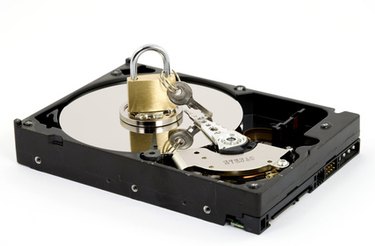
A Relational Database Management System (RDBMS) is a software system that provides access to a relational database. The software system is a collection of software applications that can be used to create, maintain, manage and use the database. A "relational database" is a database structured on the "relational" model. Data are stored and presented in a tabular format, organized in rows and columns with one record per row.
Data Structure
Video of the Day
The table format is simple and easy for database users to understand and use. RDBMSs provide data access using a natural structure and organization of the data. Database queries can search any column for matching entries.
Video of the Day
Multi-User Access
RDBMSs allow multiple database users to access a database simultaneously. Built-in locking and transactions management functionality allow users to access data as it is being changed, prevents collisions between two users updating the data, and keeps users from accessing partially updated records.
Privileges
Authorization and privilege control features in an RDBMS allow the database administrator to restrict access to authorized users, and grant privileges to individual users based on the types of database tasks they need to perform. Authorization can be defined based on the remote client IP address in combination with user authorization, restricting access to specific external computer systems.
Network Access
RDBMSs provide access to the database through a server daemon, a specialized software program that listens for requests on a network, and allows database clients to connect to and use the database. Users do not need to be able to log in to the physical computer system to use the database, providing convenience for the users and a layer of security for the database. Network access allows developers to build desktop tools and Web applications to interact with databases.
Speed
The relational database model is not the fastest data structure. RDBMS advantages, such as simplicity, make the slower speed a fair trade-off. Optimizations built into an RDBMS, and the design of the databases, enhance performance, allowing RDBMSs to perform more than fast enough for most applications and data sets. Improvements in technology, increasing processor speeds and decreasing memory and storage costs allow systems administrators to build incredibly fast systems that can overcome any database performance shortcomings.
Maintenance
RDBMSs feature maintenance utilities that provide database administrators with tools to easily maintain, test, repair and back up the databases housed in the system. Many of the functions can be automated using built-in automation in the RDBMS, or automation tools available on the operating system.
Language
RDBMSs support a generic language called "Structured Query Language" (SQL). The SQL syntax is simple, and the language uses standard English language keywords and phrasing, making it fairly intuitive and easy to learn. Many RDBMSs add non-SQL, database-specific keywords, functions and features to the SQL language.